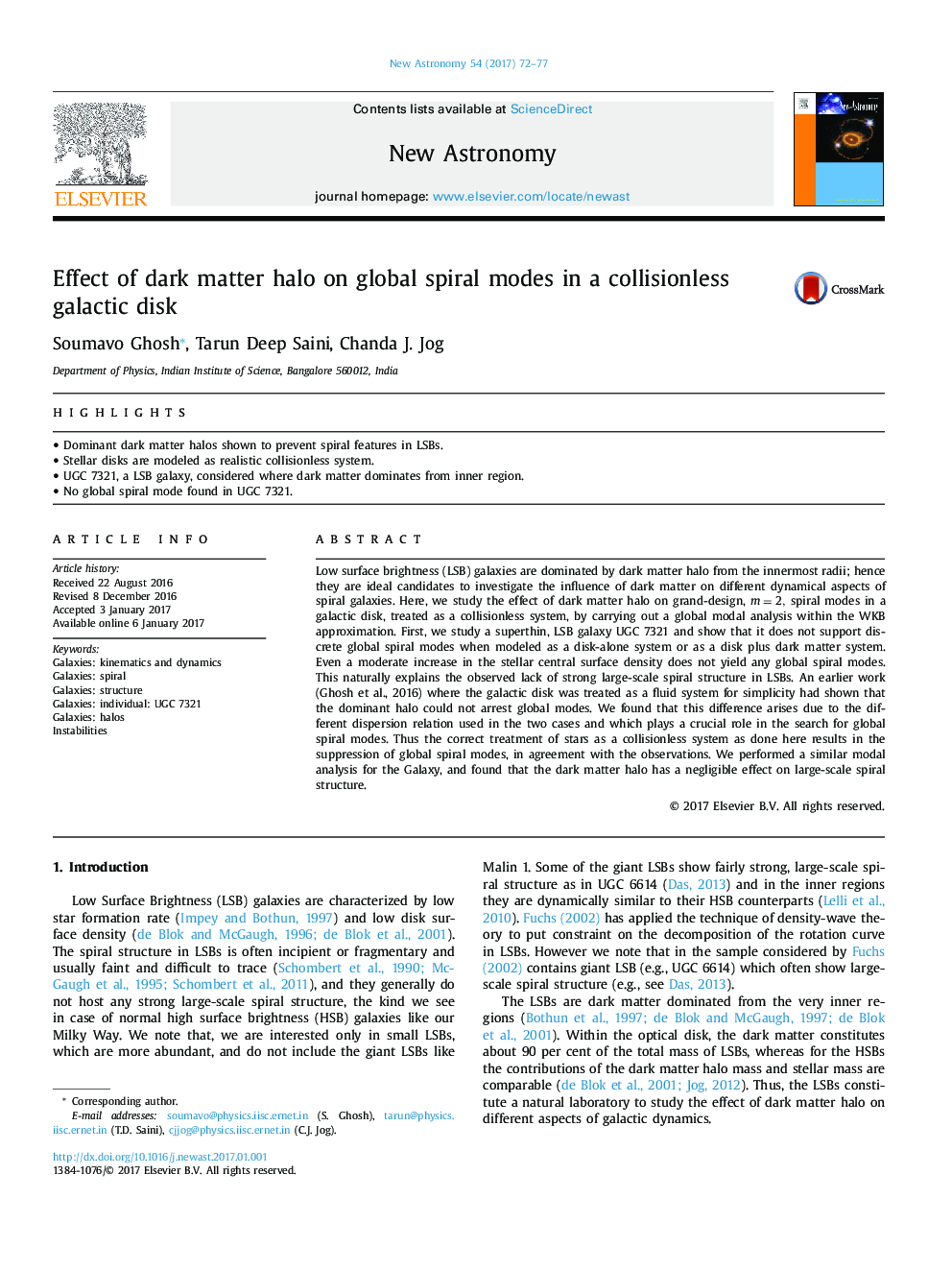| Article ID | Journal | Published Year | Pages | File Type |
|---|---|---|---|---|
| 5487773 | New Astronomy | 2017 | 6 Pages |
Abstract
Low surface brightness (LSB) galaxies are dominated by dark matter halo from the innermost radii; hence they are ideal candidates to investigate the influence of dark matter on different dynamical aspects of spiral galaxies. Here, we study the effect of dark matter halo on grand-design, m=2, spiral modes in a galactic disk, treated as a collisionless system, by carrying out a global modal analysis within the WKB approximation. First, we study a superthin, LSB galaxy UGC 7321 and show that it does not support discrete global spiral modes when modeled as a disk-alone system or as a disk plus dark matter system. Even a moderate increase in the stellar central surface density does not yield any global spiral modes. This naturally explains the observed lack of strong large-scale spiral structure in LSBs. An earlier work (Ghosh et al., 2016) where the galactic disk was treated as a fluid system for simplicity had shown that the dominant halo could not arrest global modes. We found that this difference arises due to the different dispersion relation used in the two cases and which plays a crucial role in the search for global spiral modes. Thus the correct treatment of stars as a collisionless system as done here results in the suppression of global spiral modes, in agreement with the observations. We performed a similar modal analysis for the Galaxy, and found that the dark matter halo has a negligible effect on large-scale spiral structure.
Keywords
Related Topics
Physical Sciences and Engineering
Physics and Astronomy
Astronomy and Astrophysics
Authors
Soumavo Ghosh, Tarun Deep Saini, Chanda J. Jog,
